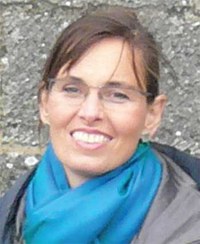A synthetic biology approach to investigating arbuscular mycorrhizal symbiosis in Marchantia paleacea
This project proposes to determine the relevance of the ancient D14L for arbuscular mycorrhizal symbiosis, using Marchantia paleacea as a test chassis.
The Idea
D14-LIKE (D14L) encodes an alpha/beta hydrolase receptor that has been well characterized for its role in the perception of the smoke constituent karrikin; whilst in recent years it has been heavily studied for functions in development and light responses. Recently however it has also been identified as being vital for the establishment of arbuscular mycorrhizal (AM) symbiosis in rice (Oryza sativa). Mutation of this gene results in a complete breakdown in communication between the plant and fungus (Gutjahr et al 2015). The evolutionary origin of the AM symbiosis coincides with the occurrence of the early land plants with affinity to liverworts approximately 450 million years ago. The liverwort lineage includes members of the Marchantiacea of which some species, such as Marchantia paleacea, engage in AM symbioses; whilst others, including Marchantia polymorpha, do not. Here, we propose to determine the relevance of the ancient D14L for AM-symbiosis. The approach is two-fold and involves (1) genetic complementation of the rice d14l mutant with synthesized homologs of M. paleacea and M. polymorpha. (2)the CRISPR-Cas9-based editing of the M. paleacea locus to assess the functional requirement of MpD14L for AM symbiosis. The project utilizes gene synthesis, Golden Gate cloning, the CRISPR/Cas9 system and established protocols for liverworts available in the Oldroyd laboratory.
The Team
Mr William Summers,
Graduate Student, Department of Plant Sciences, University of Cambridge
Dr Uta Paszkowski,
Research Group Leader, Department of Plant Sciences, University of Cambridge
Prof Giles Oldroyd,
Research Group Leader, John Innes Centre, Norwich
Dr Andrew Breakspear,
Research Assistant, John Innes Centre, Norwich
Mr Guru Radhakrishnan,
Graduate Student, John Innes Centre, Norwich
Project Outputs
Project Report
Summary of the project's achievements and future plans
Project Proposal
Original proposal and application
Report of outcomes
Overview of Project Proposal
D14-LIKE (D14L) encodes an alpha/beta hydrolase receptor that has been previously characterized as playing a role in developmental functions such as hypocotyl elongation. Recently however it has also been identified as a vital gene for the establishment of arbuscular mycorrhizal (AM) symbiosis in rice (Oryza sativa). Mutation of this gene results in a complete breakdown in communication between the plant and fungus, while complementation restores normal colonisation (Gutjahr et al 2015). The discovery of D14L as a critical plant determinant of early communication between two symbiotic partners has now led to an exciting follow-up question: Does the essential function of D14L in AM symbiosis exhibit widespread conservation?
D14L is known to be broadly conserved from basal plants such as liverworts, to modern crops including rice. Whilst the functional role of this gene in rice has been well characterised, the question of whether it plays the same vital role in other AM host plants remains unanswered. Therefore, we are now conducting a set of complementation and CRISPR knockout experiments, allowing us to establish the functional conservation of D14L. This project utilises the knowledge of Golden Gate cloning possessed by the Oldroyd Laboratory, as well as their work to establish a CRISPR/Cas9 system in the liverwort Marchantia paleacea.
There are two key components to this project:
- Test trans-complementation of Marchantia paleacea, Marchantia polymorpha and Arabidopsis thalaiana D14L in rice to assess function in AM symbiosis
- Create CRISPR/Cas9 D14L knockout lines in Marchantia paleacea and assess AM symbiotic phenotype
Through this project we will explore the symbiotic function of D14L in basal AM-host (Marchantia paleacea) and non-host (Marachantia polymorpha; Arabidopsis thaliana) plant species; subsequently allowing us to draw conclusions about the functional conservation of D14L in mycorrhizal symbiosis.
Progress
Trans-complementation
Open Plant funding has facilitated a set of experiments; first of which involves the cloning and transformation of D14L constructs into the rice d14L mutant background for subsequent of analysis of functional conservation. Constructs were produced using the Golden Gate assembly method. Andrew Breakspear, an expert of the Golden gate system, provided advice and training in the golden gate assembly method. Overall, 8 constructs were designed and synthesized (table 1) using the ENSA construct platform, before then entering the golden gate pipeline. These modules will be made openly available to others wishing to use them.
Table 1. Summary of synthesized Golden Gate modules for transformation.
All 8 modules were synthesised in level 0 golden gate vectors and then transformed to DH5α competent E. coli to make glycerol stocks. These stocks provide a longterm store from which plasmid modules can be purified and shared with partner groups.
Using Golden Gate assembly, these modules were combined to produce 6 different final constructs for introduction to the rice d14l mutant background (table 2). The first transformation will be used as a control to confirm that expression of the D14L CDS will restore mycorrhizal function. The second transformation assesses the ability of a well-studied 'non-host' version of D14L (Arabidopsis thaliana) to complement the mycorrhizal phenotype. Finally, transformations 3-6 will assess the ability for copies of D14L from closely related host (M. paleacea) and non-host (M. polymorpha) liverwort species to complement the mycorrhizal phenotype.
Table 2. Summary of transformations and golden gate modules used in each case.
It was originally planned that these constructs would be inserted into a destination vector containing BASTA resistance. This BASTA resistance was necessary to then allow for rice d14l mutants that already possessed HYG resistance to be transformed. However, our partner group based in NIAB that conducts the transformations has been unable to successfully carry out transformations when using BASTA selection. This problem has remained persistent despite prolonged efforts to optimize the protocol.
However, a solution was reached in December 2016, when the Paszkowski lab produced stable d14l CRISPR knockouts that lacked HYG resistance. Therefore, using these mutants for transformation, we can now switch to a destination vector with HYG resistance. Hygromycin selection has proved consistently reliable in past work and therefore should allow the transformation process to progress efficiently from this point onwards. The specific vector of choice will be based upon the advice of our partners at NIAB in the Wallington group, who are currently testing different options. The final constructs will be sent to this group, who will then conduct agrobacterium-mediated transformation to produce transgenic plants for experimental study. Once this is complete, the transformants will be molecularly and phenotypically characterized.
CRISPR/Cas9 knockouts in M. paleacea
The trans-complementation experiments are accompanied by CRISPR/Cas9 knockouts in M. paleacea to further establish the mycorrhizal function of D14L in basal plants. Guru Radhakrishnan, who has previous experience establishing a CRISPR/Cas9 system in M. polymorpha, will conduct the production of D14L CRIPSR knockout lines. Over the past 6 months, work has primarily been on optimizing a protocol for M. paleacea specifically, as outlined here:
Figure 1. nop1 phenotype in M. polymorpha (Ishizaki et al 2013)
As CRISPR-Cas9 mediated genome editing has been shown to work in M. polymorpha, we decided to use this system to generate knockouts in the D14L genes found in M. paleacea. As sexual cycle induction using far-red light supplementation does not work in M. paleacea, as in M. polymorpha, the highly efficient high-throughput sporeling transformation protocols established for M. polymorpha do not work in M. paleacea. Thallus cutting-based approaches, on the other hand, are applicable to M. paleacea, but produce transformants at a much lower efficiency. To get an idea about the efficiency of CRISPR-Cas9 mediated genome editing in M. paleacea and to understand how many transformants we would need to screen to identify mutations, we decided to use a gene previously shown to produce a easily quantifiable visual phenotype when knocked out in M. polymorpha. This gene NOP1, when knocked out results in the lack of air pore formation on the thallus. (Figure 1).
The CRISPR constructs used were designed such that (i) all modules were on a single binary vector; or (ii) the modules were separated to be on two vectors (Figure 2). These vectors were then transformed into Agrobacterium tumifaciens strain GV3101 and used for transformation into M. paleacea using protocols previously used for M. polymorpha.
Figure 2. Vector design for generating CRISPR knockouts
A handful of positive transformants were obtained and are currently growing. Although the plants look markedly different from plants transformed with an empty vector, the expected lack of air pores has not been observed 8 weeks posttransformation (Figure 3). We are now waiting for gemma production from these plants to genotype them and are repeating the transformations to get more plants to screen.
Once the transformation protocol has been fully optimised it will provide a guide for others to carry out similar experiments in M. paleacea. Following this, CRISPR knockouts of both D14La and D14Lb will be produced. Once this process is complete, mutant alleles will be molecularly characterised, following which the lines will be screened for mycorrhizal phenotypes. By knocking out each copy of D14L both individually and collectively, we will be able to further prove whether D14L does indeed play the same vital role for symbiosis establishment in basal plants. In addition to this, we will also be able to assess how function is split between the two
copies of D14L that M. paleacea possesses. D14L is known to be involved in both developmental and mycorrhizal functions. Therefore, by testing D14L mycorrhizal phenotypes, it will also be possible to ascertain whether the two D14L copies function in synergistic manner, or exhibit clear functional compartmentalisation. This would then open the door to further exploration of how D14L performs these specific functions.
Figure 3. Transformants with empty vector (left) and NOP1 CRISPR constructs












